The 2010 National Intimate Partner and Sexual Violence Survey reports on the prevalence and characteristics of sexual violence, stalking, and intimate partner violence in the U.S. This comprehensive study highlights the health consequences related to these violent acts and provides the first simultaneous national and state-level prevalence estimates. The findings aim to inform prevention efforts and address the significant gaps in understanding the impacts of these forms of violence.














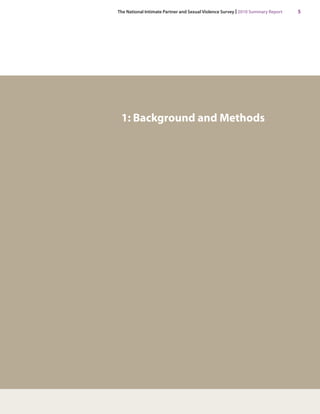

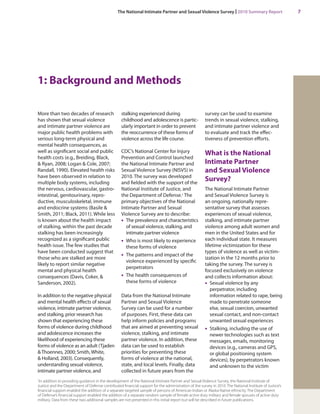





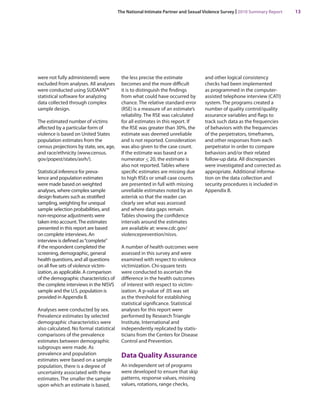




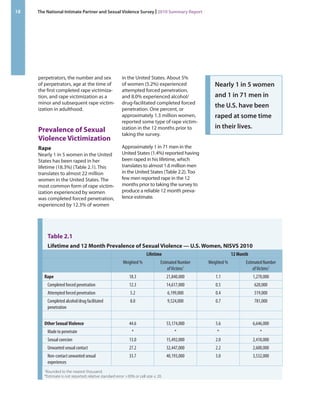



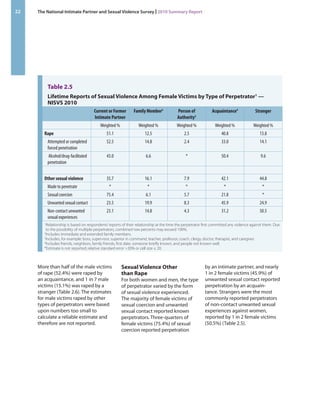
































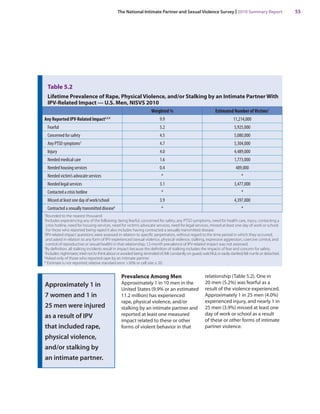











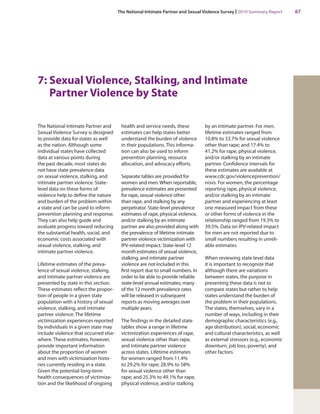







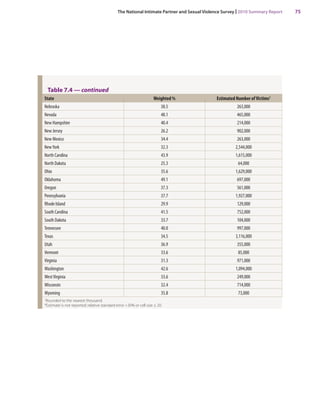


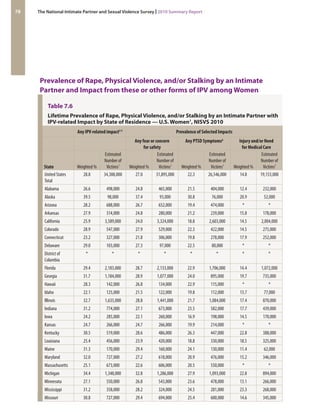

















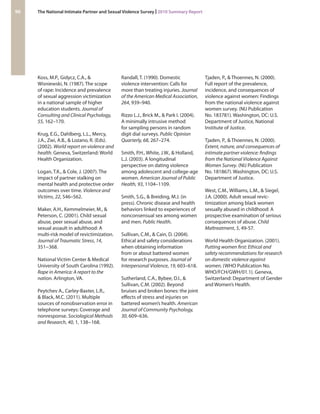


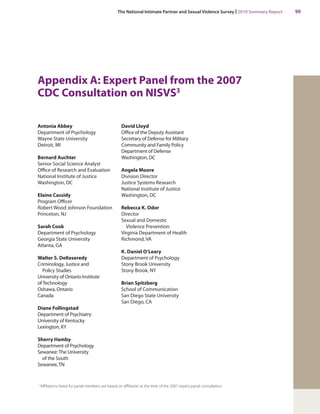







![The National Intimate Partner and Sexual Violence Survey | 2010 Summary Report 107
Stalking Tactics
How many people have ever…
• watched or followed you from a distance, or spied on you with a listening device, camera, or GPS [global positioning system]?
• approached you or showed up in places, such as your home, workplace, or school when you didn’t want them to be there?
• left strange or potentially threatening items for you to find?
• sneaked into your home or car and did things to scare you by letting you know they had been there?
• left you unwanted messages? This includes text or voice messages.
• made unwanted phone calls to you? This includes hang-up calls.
• sent you unwanted emails, instant messages, or sent messages through websites like MySpace or Facebook?
• left you cards, letters, flowers, or presents when they knew you didn’t want them to?
Expressive Aggression
How many of your romantic or sexual partners have ever…
• acted very angry towards you in a way that seemed dangerous?
• told you that you were a loser, a failure, or not good enough?
• called you names like ugly, fat, crazy, or stupid?
• insulted, humiliated, or made fun of you in front of others?
• told you that no one else would want you?
Coercive Control
How many of your romantic or sexual partners have ever…
• tried to keep you from seeing or talking to your family or friends?
• made decisions for you that should have been yours to make, such as the clothes you wear, things you eat, or the friends you have?
• kept track of you by demanding to know where you were and what you were doing?
• made threats to physically harm you?
• threatened to hurt him or herself or commit suicide when he or she was upset with you?
• threatened to hurt a pet or threatened to take a pet away from you?
• threatened to hurt someone you love?
• hurt someone you love?
• {if applicable} threatened to take your children away from you?
• kept you from leaving the house when you wanted to go?
• kept you from having money for your own use?
• destroyed something that was important to you?
• said things like “If I can’t have you, then no one can”?](https://image.slidesharecdn.com/nisvsreport2010-a-140822075333-phpapp01/85/National-Intimate-Partner-and-Sexual-Violence-Survey-117-320.jpg)






